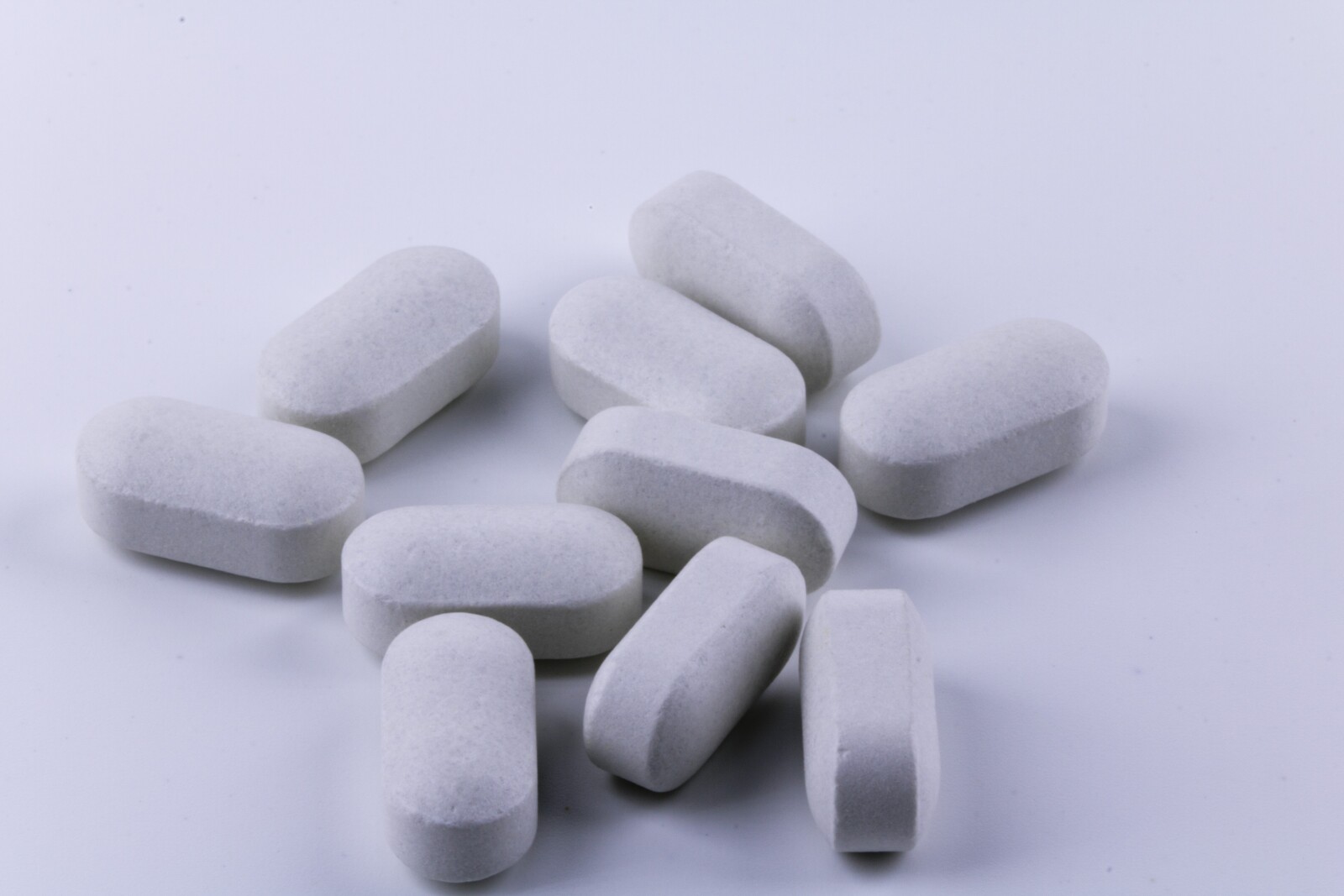Warfarin Side Effects
Despite being the second most prescribed anticoagulant, Warfarin's side effects can range from mild to severe. This article provides a thorough examination of both common and uncommon side effects associated with Warfarin use. It serves as an essential resource for patients, caregivers, and healthcare providers, aiming to promote safe and effective use of this vital medication. Stay informed and navigate the complexities of Warfarin treatment with confidence.

Key Takeaways
- Warfarin may cause common side effects such as inflammation of the skin, nausea, vomiting, diarrhea, bloating, and abdominal pain.
- Warfarin can lead to rare but serious side effects such as bleeding in the brain, tissue necrosis, calciphylaxis, acute kidney injury, and cholesterol embolisms.
- Regular monitoring of warfarin is necessary to avoid incorrect dosages and the increased risk of excessive bleeding.
- Warfarin increases the risk of blood clot formation and movement, emphasizing the need for proper monitoring of blood-thinning effects.
Understanding Warfarin: A Brief Overview
Derived from coumarin, a chemical found in many plants, Warfarin is a widely prescribed anticoagulant, crucial for preventing harmful blood clots in patients with certain cardiovascular conditions. However, managing warfarin interactions with other drugs and diet is critical as it can significantly affect the drug's effectiveness and potentially result in severe side effects. Consequently, healthcare providers often consider warfarin alternatives, such as direct oral anticoagulants, which have fewer interactions and require less monitoring. These alternatives, though, may not suit all patients, especially those with kidney disease or mechanical heart valves. Thus, understanding Warfarin, its interactions, and viable alternatives is integral, ensuring safe and effective prevention of blood clot formation.
The Role of Warfarin in Medical Treatment
Since its introduction in the 1950s, Warfarin has been a cornerstone in the treatment of thromboembolic conditions, and despite the development of newer anticoagulants, it remains a commonly prescribed medication. Warfarin alternatives have emerged, offering benefits such as fewer dietary restrictions and less frequent blood testing. However, they may carry their own risks and are not suitable for all patients. Balancing the benefits of anticoagulation against the potential long-term effects of Warfarin, such as bleeding complications, is a key aspect of patient management. Despite these challenges, Warfarin continues to play a vital role in preventing thromboembolic events in at-risk patients, demonstrating its enduring value in medical treatment. Regular monitoring and patient education are crucial to optimizing its therapeutic efficacy and safety.
How Warfarin Works: The Science Behind It
Although it has been in use for several decades, understanding the mechanism of action of Warfarin, a commonly prescribed anticoagulant, is crucial to comprehend its side effects and ensure safe administration. The warfarin mechanism involves inhibiting the synthesis of vitamin K-dependent clotting factors in the liver, thus preventing the formation of blood clots. This process is known as anticoagulation. The warfarin metabolism occurs mainly in the liver, where it is converted into inactive metabolites, which are then eliminated through urine and feces. The body's response to warfarin can be influenced by various factors, including age, diet, and the presence of other medications, which may either enhance or reduce its anticoagulant effect. Therefore, regular monitoring of the patient's response is essential to adjust the dose and prevent complications.
Common Side Effects: What to Expect
In the course of treating patients with warfarin, healthcare professionals often observe common side effects, and patients should be aware of these to monitor their condition effectively. These side effects may range from minor discomforts like nausea and abdominal pain to more serious conditions like inflammation of the skin. Monitoring warfarin levels is crucial in managing these side effects, as it allows for timely adjustments to the dosage. The Importance of patient education in this context cannot be overstated. Patients must be well-informed about potential side effects and the necessary precautions to take when they appear. Regular consultations with healthcare providers, coupled with patient vigilance, can significantly mitigate the risks associated with warfarin treatment.
Less Common Side Effects: Rare but Serious
While the majority of patients taking warfarin may never experience them, there exists a small subset of less common but potentially serious side effects that warrant careful attention. These severe warfarin side effects can include bleeding in the brain, tissue necrosis, and calciphylaxis, which can lead to fatal conditions like sepsis or organ failure. Acute kidney injury and cholesterol embolisms are other possible warfarin complications that can cause significant harm. Regular monitoring of blood levels and dosages is crucial to mitigate these risks. Despite their rarity, these side effects underline the importance of careful management and close medical supervision when taking warfarin. It is vital for healthcare providers to educate their patients about these potential complications and ensure regular check-ups.
Unusual Reactions to Warfarin
A small percentage of patients on warfarin may experience unusual reactions to the drug, which can manifest in a variety of unexpected symptoms and complications. These unusual warfarin side effects may include purple toes syndrome, a condition characterized by purple or dark discoloration of toes and feet, and hair loss. Another rare reaction is warfarin-induced skin necrosis, a condition where blood clots form in small blood vessels of the skin, leading to skin death. Managing rare warfarin reactions requires immediate medical attention and potentially discontinuing the medication. It is critical that patients and healthcare professionals are aware of these unusual responses to ensure measures are in place to identify and manage these exceptional occurrences promptly.
Warfarin and Allergic Reactions: What You Need to Know
Allergic reactions to Warfarin, a widely used anticoagulant, can range from mild skin irritation to severe anaphylaxis, making it crucial for patients and healthcare providers to understand these potential side effects. While it is common to experience some discomfort when starting a new medication, uncommon complications such as severe skin rashes, swelling, or difficulty breathing should prompt immediate medical attention. These may be indicative of an allergic reaction to Warfarin. Managing Warfarin allergies involves promptly discontinuing the medication and seeking medical advice. In some cases, antihistamines or steroids might be administered to counteract the allergic response. In severe cases, emergency treatment for anaphylaxis may be required. Therefore, awareness and timely action are key to managing allergic reactions to Warfarin.
Interactions: Warfarin and Other Medications
Often, patients taking Warfarin may concurrently use other medications, leading to potential interactions that can significantly impact the effectiveness and safety of treatment. These drug interactions can alter the way Warfarin works, increasing potential risks including bleeding complications or reducing its anticoagulant effect. Some medications such as nonsteroidal anti-inflammatory drugs, certain antibiotics, and even some dietary supplements and herbal products, can potentiate the effect of Warfarin, heightening the risk of dangerous bleeding. Conversely, drugs like Rifampin or St. John's Wort can reduce Warfarin's efficacy, putting patients at risk for thrombotic events. Therefore, it is crucial for patients and healthcare providers to communicate effectively about all medications, prescription or over-the-counter, taken along with Warfarin to prevent harmful interactions.
Monitoring and Adjusting Warfarin Dosage
The process of monitoring and adjusting warfarin dosage is an essential aspect of treatment, and it requires careful attention to ensure optimal therapeutic efficacy and patient safety. This involves frequent blood tests to measure the International Normalized Ratio (INR), a standard for how long it takes blood to clot. Depending on the INR results, clinicians may need to adjust the warfarin dosage to maintain an ideal balance, avoiding both clot formation and excessive bleeding. Managing warfarin therapy is a delicate procedure due to the drug's narrow therapeutic range and variability in patient response. The individualized nature of warfarin treatment underscores the importance of careful monitoring and dosage adjustments to achieve the best patient outcomes.
The Importance of Regular Blood Testing While on Warfarin
Regular blood testing, a crucial component of warfarin therapy, serves two fundamental purposes: it helps ensure the medication is working effectively, and it aids in the early detection of potential side effects. The benefits of regular blood testing cannot be overstated. It provides vital information about the patient's response to the medication, allowing for accurate managing of warfarin dosage. This approach enhances clinical outcomes by minimizing the risk of adverse effects such as hemorrhage or thromboembolism. Regular monitoring also flags any significant changes in the patient's INR (International Normalized Ratio), a key indicator of warfarin's effectiveness. Consequently, a proactive and methodical approach to blood testing is paramount to optimizing the safety and efficacy of warfarin therapy.
Warfarin Overdose: Signs, Symptoms, and Treatment
One should be vigilantly aware that an overdose of Warfarin can trigger a range of significant symptoms, necessitating immediate medical attention and treatment. Notable signs of a Warfarin overdose include unusual bleeding or bruising, blood in urine or stools, and prolonged bleeding from cuts. Other symptoms might encompass dizziness, weakness, and severe headache. If these symptoms are observed, immediate medical intervention is crucial. Treatment primarily involves discontinuing Warfarin and potentially administering vitamin K to reverse its effects. In severe cases, blood transfusions may be necessary. Managing warfarin complications require regular monitoring of INR (International Normalized Ratio) levels, a measure of blood clotting, to ensure safe and effective treatment.
Coping With Side Effects: Tips and Suggestions
While dealing with Warfarin's potential side effects can be challenging, there are several strategies that may help manage these effects and improve patient comfort. These coping strategies include maintaining a consistent diet and regular exercise, avoiding alcohol and over-the-counter medications that may interfere with Warfarin, and keeping stress levels in check. Regular health check-ups are crucial for monitoring Warfarin's effectiveness and managing symptoms. In case of any unusual symptoms, immediate medical attention should be sought. It is also recommended to wear a medical alert tag that informs healthcare professionals about the use of Warfarin. Lastly, educating oneself about Warfarin and its potential side effects can empower patients and help them take an active role in their treatment process.
Lifestyle Changes to Minimize Side Effects
Adopting specific lifestyle alterations, such as maintaining a balanced diet and engaging in moderate physical activity, can significantly mitigate the potential side effects of Warfarin. Dietary restrictions play a crucial role in managing warfarin therapy. A consistent intake of Vitamin K, found in leafy greens, is critical as it can affect how warfarin works in your body. Sudden increases or decreases in Vitamin K intake can lead to unwanted changes in the INR, a test that measures how long it takes for your blood to clot. Exercise recommendations for individuals on warfarin include regular, moderate activity while avoiding contact sports or activities with a high risk of injury. These lifestyle changes, along with regular monitoring by healthcare professionals, can help minimize the side effects of warfarin.
Warfarin and Diet: What to Eat and What to Avoid
Navigating dietary restrictions can be challenging for individuals on warfarin, and understanding what foods to consume and what to avoid is essential for managing the drug's effectiveness. Warfarin and vitamin K: finding the right balance is crucial, as vitamin K can counteract the effects of warfarin, making it less effective. Foods high in vitamin K, such as leafy green vegetables, should be eaten consistently, not in large quantities at once. Conversely, overindulgence in alcohol can increase warfarin's effect, leading to excessive bleeding. Thus, warfarin and alcohol: potential risks and precautions should be noted, with moderation being the key. In general, maintaining a consistent, balanced diet and communicating dietary changes with your healthcare provider can help optimize your warfarin therapy.
Communicating With Your Healthcare Provider About Warfarin
During your treatment with Warfarin, open and regular communication with your healthcare provider is crucial to manage potential side effects effectively. This communication process should be ongoing and include detailed discussions about any changes in your health, diet, or lifestyle. By communicating with your healthcare provider about symptoms, you can facilitate early detection and management of warfarin side effects.
Sharing information about any new medications or supplements you are taking is also vital as they may interfere with Warfarin's effectiveness. Keep a record of any unusual symptoms and report them promptly to your healthcare provider.
Frequently Asked Questions
Can Warfarin Affect Fertility or Harm an Unborn Child?
Warfarin is an anticoagulant that can indeed impact fertility and pose risks to an unborn child. This is known as Maternal Warfarin Syndrome, where warfarin exposure during pregnancy can lead to developmental issues. Additionally, Warfarin Contraception is a significant topic, as women of childbearing age taking warfarin should consider reliable contraceptive methods to prevent potential harm to a developing fetus. Always consult a healthcare provider when considering pregnancy while on warfarin.
Are There Any Long-Term Effects of Taking Warfarin?
Long-term use of Warfarin may result in several adverse effects. Notably, an overdose can lead to severe bleeding episodes, which might result in life-threatening conditions. Chronic use can also result in hypersensitivity, manifesting as Warfarin allergies. These may range from mild skin reactions to serious anaphylactic responses. Regular monitoring is essential to prevent these potential complications. It's crucial to maintain a balance, as with the sword of Damocles, where too much or too little can lead to harmful consequences.
How Does Warfarin Interact With Natural Supplements or Herbal Remedies?
Warfarin's efficacy can be significantly influenced by certain supplements and herbal remedies, a phenomenon known as 'Supplement Interactions'. For instance, St. John's Wort may accelerate warfarin's metabolism, reducing its effectiveness. Conversely, Ginkgo Biloba and Ginseng can potentiate warfarin's blood-thinning properties, increasing bleeding risks. This 'Herbal Influence' highlights the vital need for open patient-doctor dialogues about all supplements taken when on warfarin to ensure safe and effective treatment.
What Should I Do if I Miss a Dose of Warfarin?
If you miss a dose of warfarin, it's crucial to take the missed dose as soon as you remember. However, if it's almost time for your next dose, skip the missed one and continue with your regular schedule. Avoid doubling doses. Inconsistent dose timing can lead to complications. If regularly forgotten, consider medication alternatives or reminders. Always consult with a healthcare provider for personalized advice concerning missed doses of warfarin.
Is There a Risk of Addiction or Dependency With Long-Term Use of Warfarin?
There is no known risk of addiction or dependency associated with long-term use of warfarin. This drug primarily serves as an anticoagulant, preventing harmful blood clots. However, excessive use can lead to a warfarin overdose, characterized by severe bleeding. If concerns arise about the side effects or potential overdose of warfarin, patients are advised to discuss warfarin alternatives with their healthcare provider to ensure optimal treatment and patient safety.
Conclusion
In conclusion, Warfarin, a pivotal anticoagulant, carries both therapeutic benefits and potential side effects. It is imperative to understand these impacts for optimal treatment outcomes. Implementing lifestyle modifications, adhering to dietary guidelines, and maintaining open communication with healthcare providers can significantly mitigate associated risks. Continued education and awareness are the keys to harnessing Warfarin's potential while minimizing its side effects, thereby enhancing patient safety and overall healthcare delivery.

This post has been generated by AI and was not reviewed by editors. This is Not legal advice. Please consult with an attorney.




